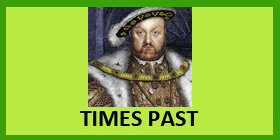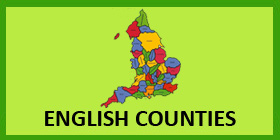




Back to the Lancashire Page

- The Royal Connection
- Lancashire Eats
- Owlbut's Birdwatch
- Lancashire VIPs

The first Duke of
Lancaster, the county town of Lancashire, was Henry of Grosmont, 4th Earl of Lancaster, 4th Earl of Leicester, 1st Earl of Derby, 1st Earl of Lincoln and
Lord of Bowland. He died in 1361, possibly as a result of a surfeit of earls and the peerage expired. Being a duke makes you a peer of the realm. On
13th November 1362 the title was given to John of Gaunt, 1st Earl of Richmond, and the third surviving son of King Edward III. John had married Blanche of
Lancaster, daughter of Henry Grosmont and heiress to his estates. When John died in 1399, the Dukedom passed to his son, Henry of Bolingbroke, who would
later become Henry IV, parts I and II. The dukedom then became part of the monarchy and the King was also Duke of Lancaster. Later that same year, the
dukedom was re-instated and given to Henry's son, also Henry and when he became King in 1413 it merged into the crown again and has been there ever since.
Lancashire and the county town called Lancaster are the home of the red rose, across the country from York, home of the white rose. You may
already know about the wars of the Roses which were fought, on and off, from 1455 until 1485. If you would like to know more then start
here on our website.
Descendants of the houses of Lancaster and York battled to be King of England over this period with both sides having spells as ruler.
Linking this to a royal connection is therefore pretty easy
However, prior to the death of Queen Elizabeth II, The Duke of Lancaster was, between 1952 and September 8th 2022, Queen, Elizabeth II and,
to the best of my knowledge, a woman. However, as I said earlier, the monarch is, since 1413, always the Duke of Lancaster and so now Queen Elizabeth
has died, King Charles II has become Duke of Lancaster. The Duchy of Lancaster, of which said Duke is head, owns land and buildings in the estate which
provides money for the Crown. At one time, in Lancaster, it was not uncommon to hear the national anthem sung as "God save our gracious Queen, long live our noble Duke," and so on.
![]() Back to the top
Back to the top
What else would you expect here but the
Lancashire Hotpot, a very traditional Lancashire dish. During the Industrial Revolution, (read about it here), Lancashire was the centre of the cotton industry.
Most of the workers in the cotton mills were poor and the Hotpot was a way of having a nice hot meal without too much expense. What is more the meal could be left
to cook all day ready for when you got home.
Some people think the name comes from the tall, earthenware dish used to make the stew, because it is really a stew, but others say that the term Hotpot
comes from the word hodgepodge which just means a mixture. Traditionally the meal was made up of layers of meat, in olden days mutton but now more likely lamb, with
alternate layers of root vegetables and thinly sliced potatoes. Also in the olden days the pot would have oysters added when these were cheap. You could decide which
vegetables to include, maybe carrots or parsnips, but the mutton and potatoes were a must.
![]() Back to the top
Back to the top
Kestrels are found all over the place from farms to cities and on moorland. The only places they don't seem to like are dense
forests, mountains and wetlands with no trees. You can often see them hovering beside a main road or perched on a high tree branch or telephone wire on the look
out for food. They eat small mammals and birds, worms and insects. Kestrels have pointed wings and a long tail. They are on the Amber list but there are about
46,000 breeding pairs in the UK.
Kestrels have black, brown, cream, buff, grey, orange and red feathers, yellow legs and a black and yellow, short, hooked chunky beak. They are about
35 cms in length, have a wingspan of between 70 and 80 cms and can weigh between 150 and 250 grams.

Seven random people who were born in Lancashire in the last 100 years:-
Nick Park (Animator - Creator of Wallace and Gromit), Zoe Ball (TV and Radio Presenter), Jessica Taylor (Singer), Sir Ian McKellen (Actor),
Andrew Flintoff (cricketer/TV Presenter), James Anderson (Cricketer) and the late Eric Morecambe (Comedian)
![]() Back to the top
Back to the top

